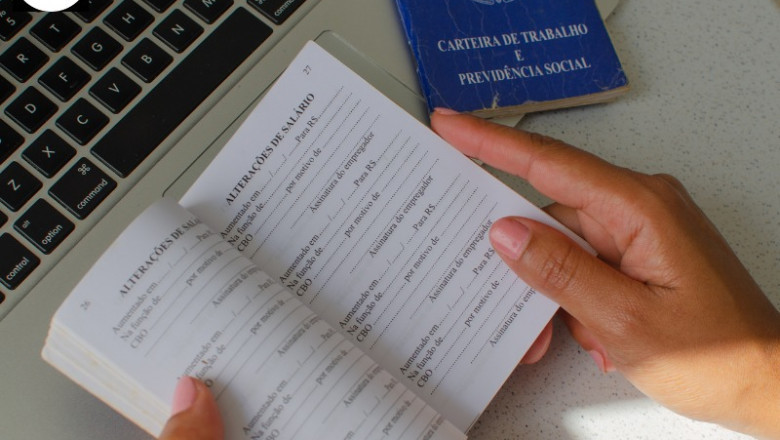views
The Importance of DTP in Document Accessibility Across Languages
Creating documents that are accessible across different languages is an essential part of modern communication. With businesses and organizations becoming global, the need for accessible and well-structured content has never been more significant. Desktop Publishing (DTP) plays a vital role in ensuring that documents are not only visually appealing but also accessible to people from diverse linguistic and cultural backgrounds.
Understanding Document Accessibility
Document accessibility ensures that all individuals, regardless of language, culture, or physical ability, can understand and interact with the content. Accessibility is about more than just translating words; it includes adapting visual elements like layouts, fonts, and images to fit the needs of diverse audiences. This becomes especially critical in multilingual documents where cultural nuances and technical details must be handled carefully.
A visually consistent and accessible document helps build trust with the audience. If a document is not easy to read or understand, the intended message might get lost, leading to confusion or miscommunication.
How DTP Enhances Accessibility
DTP is more than arranging text and images on a page. It involves carefully designing documents to ensure they meet the highest standards of readability and accessibility. For multilingual content, this often means making adjustments like adapting layouts for text expansion, using culturally appropriate fonts, and ensuring all visual elements support the message.
For example, some languages require more space due to longer words or characters, while others may read from right to left, requiring the layout to be flipped. DTP ensures these adjustments are seamless, creating a smooth reading experience for everyone.
Adapting Design for Multiple Languages
Multilingual documents face unique challenges, especially when dealing with languages that differ in script, direction, or spacing. DTP experts ensure that the layout works well for all languages by addressing issues such as:
-
Font Compatibility: Choosing fonts that support multiple scripts while maintaining readability.
-
Text Alignment: Adapting alignment for languages that read right-to-left or require different spacing.
-
Consistent Design: Ensuring design elements remain consistent across all language versions to maintain brand identity and professionalism.
These considerations are crucial for documents like user manuals, legal documents, and marketing materials, where clarity and accuracy are non-negotiable.
Accessibility for People with Disabilities
DTP also plays a significant role in making documents accessible for individuals with disabilities. Features like proper heading structures, alt-text for images, and readable fonts help people with visual impairments or other challenges navigate the content. Compliance with accessibility standards such as WCAG or ADA is often required, especially for public-facing documents or those in specific industries like healthcare or education.
Accessible multilingual documents demonstrate a company’s commitment to inclusivity. By ensuring everyone can access and understand the content, organizations can expand their reach and connect with audiences more effectively.
The Role of Technology in DTP
Modern DTP tools make it easier to create accessible documents. Tools like Adobe InDesign, QuarkXPress, and others allow designers to manage complex layouts for multiple languages. Features like automatic text flow, style guides, and template-based designs help streamline the process.
Technology also assists in ensuring compliance with accessibility standards. For example, DTP software can check whether a document is compatible with screen readers or meets legal requirements for accessibility. This reduces the time and effort needed to create documents that cater to diverse audiences.
Real-World Applications of Accessible DTP
Accessible multilingual documents are essential in many industries. In healthcare, patient information must be understandable to individuals who speak different languages. In education, materials need to be accessible to learners of all abilities and linguistic backgrounds. Even in e-commerce, accessible product catalogs and manuals can significantly improve customer satisfaction.
By combining DTP with translation and localization, organizations can produce materials that are not just readable but truly impactful for a global audience.
Conclusion
DTP is a cornerstone of document accessibility in a multilingual world. It ensures that content is not only visually appealing but also easy to understand for people from diverse linguistic and cultural backgrounds. From adapting layouts to meet the needs of different languages to ensuring accessibility for individuals with disabilities, DTP helps bridge the gap between content and its audience.
In today’s globalized world, investing in high-quality DTP services is not just a necessity—it’s a step toward inclusivity and better communication. Through accessible and well-designed documents, organizations can effectively connect with their audiences and leave a lasting impression.
DTP Labs is a desktop publishing company based in New Delhi, India. We offer book publishing Services, PDF to Word conversions, post-translation DTP, and e-Learning localization services to translation agencies worldwide. To avail of our services, check out our website www.dtplabs.com, or contact us at info@dtplabs.com.






















Comments
0 comment